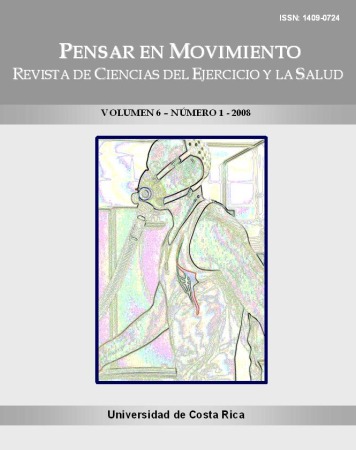Abstract
The purpose of this study was to determine how voluntary drinking is affected by the simultaneous presence of two different beverages (plain water and a sports drink) compared to the availability of just one beverage at a time. Methods: Twenty recreational cyclists and triathletes (22.8 ± 6.9 years old) were recruited. Subjects completed three laboratory sessions each (DB=23°C, RH=70%) in randomly assigned order, with at least one week between sessions: one session, only water available (WAonly); another session, only sports drink (SDonly); and another session, both beverages (BOTH). Drinking was ad libitum. Each exercise session lasted 100 min.: a 20 min. warm-up, followed by eight 5-min. high-intensity intervals (85-95% HRmax) alternating with 2.5 min. recovery time (60-70% HRmax) and a final 20 min. recovery (60-70% HRmax). Fluid ingestion was measured each 20 min. Taste scores for both fluids (W and SD) and body weight were also measured before and after each exercise session. Results: No significant differences were found for total fluid ingestion when comparing BOTH and SDonly (846.1 ñ 382.7 vs. 827.9 ñ 365.6 mL, respectively, p > 0.05). However, subjects consumed less water (WAonly, 633.4 ñ 400.5 mL) compared with the other two conditions (p = 0.009). Subjects drank more sports drink than plain water during the BOTH condition (659.2 ñ 349.8 vs 186.9 ñ 128.0, p < 0.0005). Voluntary drinking was not enough to prevent a minor but statistically significant (p < 0.003) average reduction in body mass (voluntary dehydration) of 0.5% BM for all experimental conditions. Sensory tests showed a preference for the sports drink flavor (7.49±1.1) vs. water (5.41±1.5) (p<0.0005). Conclusions: Sports drink enhances voluntary fluid intake more than when only water is available. Ad libitum drinking was greater when a sports drink was available. Sensory scores obtained support this preference for a sports drink vs. water.##plugins.facebook.comentarios##

This work is licensed under a Creative Commons Attribution-NonCommercial-ShareAlike 4.0 International License.
Copyright (c) 2014 PENSAR EN MOVIMIENTO (Thinking in/about Motion)
Downloads
Download data is not yet available.






